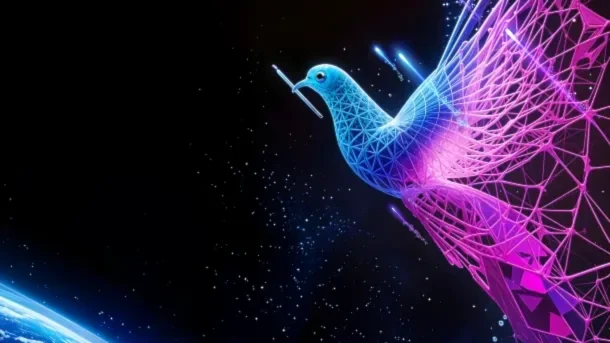AI threatens press freedom: UN warns of growing dangers to journalists
The UN marks World Press Freedom Day with a stark warning: AI tools are fueling censorship, misinformation, and attacks on journalists worldwide.
-

An illustration representing World Press Freedom Day in an undated photo (UNESCO/Marc James)
Press freedom continues to face mounting threats worldwide, with journalists being killed, censored, surveilled, and discredited at alarming rates. According to the United Nations, at least 20 media workers have been killed since January 2025. Impunity remains the norm, with over 80% of journalist killings going unpunished. These attacks reflect a growing erosion of protections for media professionals and freedom of expression.
But the threats to journalism are not only physical. Media outlets are increasingly being shuttered, and information ecosystems are being polluted with misinformation and disinformation. These long-standing challenges are being amplified by new technologies, especially artificial intelligence (AI), which is reshaping journalism and accelerating censorship in ways previously unseen.
UN: AI transforms media but amplifies risks for journalists
The United Nations has warned that while AI presents new opportunities for communication and access to information, it also introduces significant dangers to press freedom. AI is now a powerful tool in information gathering and dissemination, but it also facilitates the spread of false or misleading narratives, fuels online hate speech, and reinforces mechanisms of censorship.
“AI can be used to spread false or misleading information, increase online hate speech, and support new types of censorship,” the UN stated. It noted that AI is being deployed for mass surveillance of journalists and citizens, creating a chilling effect on journalistic work and public discourse.
Powerful technology companies increasingly act as gatekeepers of information through AI-driven content filtering and recommendation systems. The result is an information space where diverse perspectives are drowned out, and smaller media outlets are pushed to the margins.
Women journalists face increased tech-based violence
UNESCO has raised the alarm about AI-driven attacks specifically targeting women journalists. Technology-facilitated gender-based violence (TFGBV) is surging, with deepfakes, doctored images, and online disinformation campaigns being deployed to intimidate and discredit female reporters.
“AI amplifies existing risks for women journalists in the digital landscape,” the UN cultural agency stated. These attacks not only threaten individual safety but also contribute to self-censorship and reduce public access to independent reporting.
World Press Freedom Day 2025 highlights global media crisis
On May 3, the international community marked World Press Freedom Day, a moment to reflect on the state of global journalism and honor those who have lost their lives in pursuit of truth. This year’s commemoration focused on the impact of artificial intelligence on media ecosystems, information dissemination, and press independence.
AI-based algorithms shape our opinions: Turk
UN human rights chief Volker Turk used the occasion to urge governments and tech companies to change course. “AI-based algorithms often dictate what we see, shaping our opinions and perceptions of reality,” he warned. “States are also using AI tools to monitor journalists and their sources online, violating their right to privacy. This has a chilling effect on media workers everywhere. And women journalists are disproportionately targeted.”
Türk called on States to ensure journalists are protected from physical harm, digital surveillance, and legal harassment. He also stressed the urgent need for transparency in how data is used, how AI algorithms are designed, and how content is curated on social media platforms.
UN calls for accountability and responsible AI development
To confront the growing crisis, Türk announced that his Office, along with UNESCO, is offering guidance to help technology companies assess the risks their tools pose to journalism and civil society. The agencies aim to prevent the concentration of AI power in the hands of a few corporations, which he said could undermine global media diversity and democratic discourse.
As AI continues to reshape the landscape of press freedom, the international community is being urged to act swiftly, not only to embrace the technology’s benefits but also to ensure it does not become a tool of control, surveillance, and suppression.

 4 Min Read
4 Min Read








